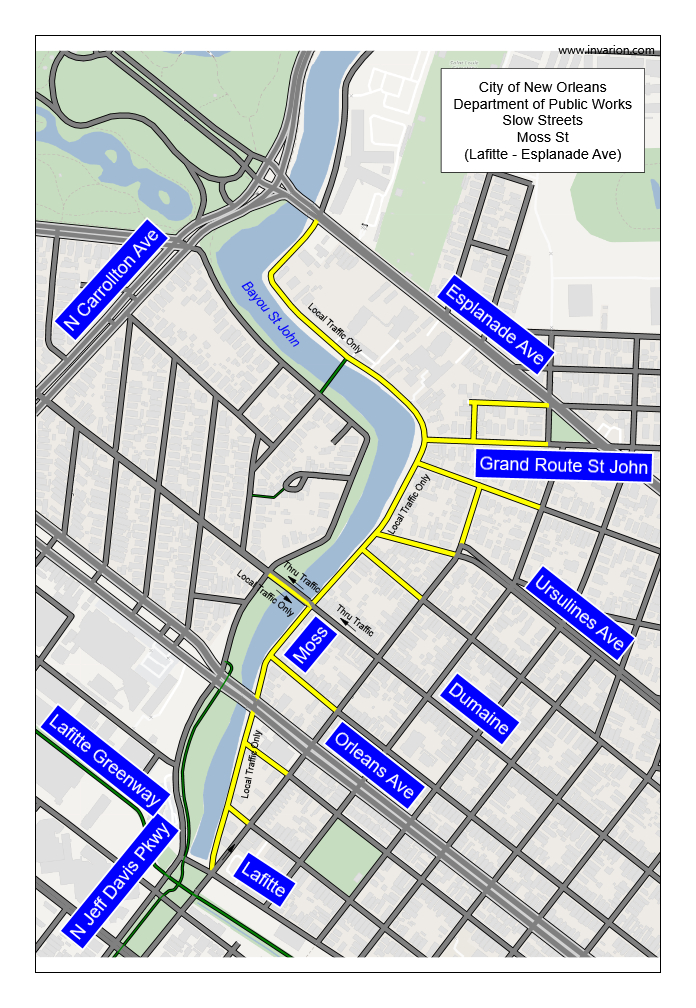Slow Streets
The Slow Streets initiative is a collaboration between the Department of Health, the Department of Public Works and the Mayor’s Office of Transportation. This temporary traffic modification is being implemented as part of the City’s COVID-19 response under the Slow Streets initiative, which aims to provide additional space for safe social distancing where crowding occurs.
The goal of the program is to mitigate spatial barriers to social distancing by providing more room for people to adequately walk, bike and jog while maintaining the required six-foot distance from others. Based on examples nationwide, the above-mentioned departments developed the Slow Streets initiative to convert low-traffic roadways to spaces that allow people to stay safe distances from each other.
Slow Streets: Moss Street
On Wednesday, May 6, 2020 the City of New Orleans installed a temporary traffic modification to limit access on the downtown side of Moss Street between Lafitte Avenue and Esplanade Avenue along Bayou St. John to local traffic and emergency vehicles only. These modifications included signage, cones and barricades in place 24 hours a day, seven days a week through the morning of Monday, May 18, 2020. During this time period, the Department of Public Works monitored and evaluated the modifications, and the Office of Transportation collected feedback via a public survey.
More Information
Moss Street Slow Streets Traffic Advisory
Moss Street Slow Streets Flyer
Map of Moss Street Traffic modifications

Slow Streets Frequently Asked Questions (FAQ)
What does the Slow Streets Initiative do?
- Slow Streets does promote physically distant physical activity, allowing residents to safely distance themselves from neighbors when walking, jogging, and biking along these streets. Always maintain at least 6 feet of space from others.
- Slow Streets does designate roads as "Closed to Through Traffic." This limits traffic to local traffic for residents and businesses, deliveries, emergency vehicles, and people walking and bicycling. Signage and barricades will be in place to communicate the traffic restrictions.
- Slow Streets does work with community organizations and neighborhood associations to complement City efforts.
- Slow Streets does involve DPW staff monitoring and evaluating locations to ensure Slow Streets are having the intended public health impacts and make any adjustments as needed.
What does the Slow Streets Initiative not do?
- Slow Streets do not restrict local traffic from accessing residences and businesses along the designated streets. Only through traffic is restricted.
- Slow Streets do not restrict emergency vehicles access along Slow Streets.
- Slow Streets do not create new locations for people to gather for stationary activities.
Can I drive my car on a designated Slow Street?
- Only local motor vehicle traffic accessing a residence or business should drive on a Slow Street. If you are driving on a Slow Street, drive slow and remain aware of other people maintaining proper physical distancing while walking or bicycling.
Can I walk and bike on a designated Slow Street?
- Yes, people can walk, jog, and bike on Slow Streets. As part of the COVID-19 public health guidance, residents can engage in outdoor physical activity during the Stay at Home order. But maintaining physical distancing is essential during this outdoor activity and Slow Streets creates low-speed, low-volume roadways to increase physical distancing options.